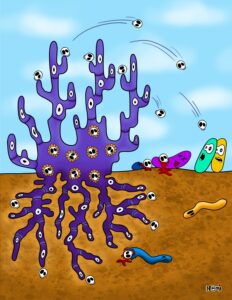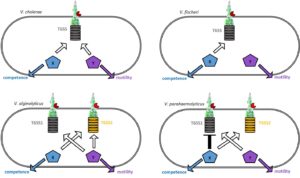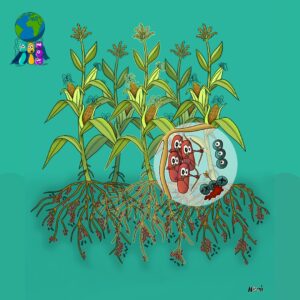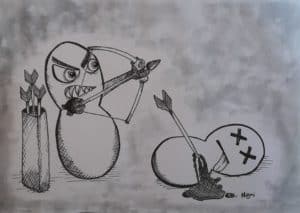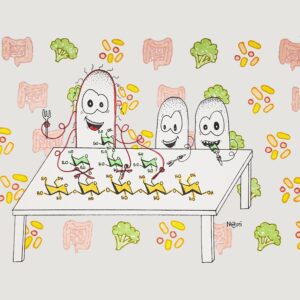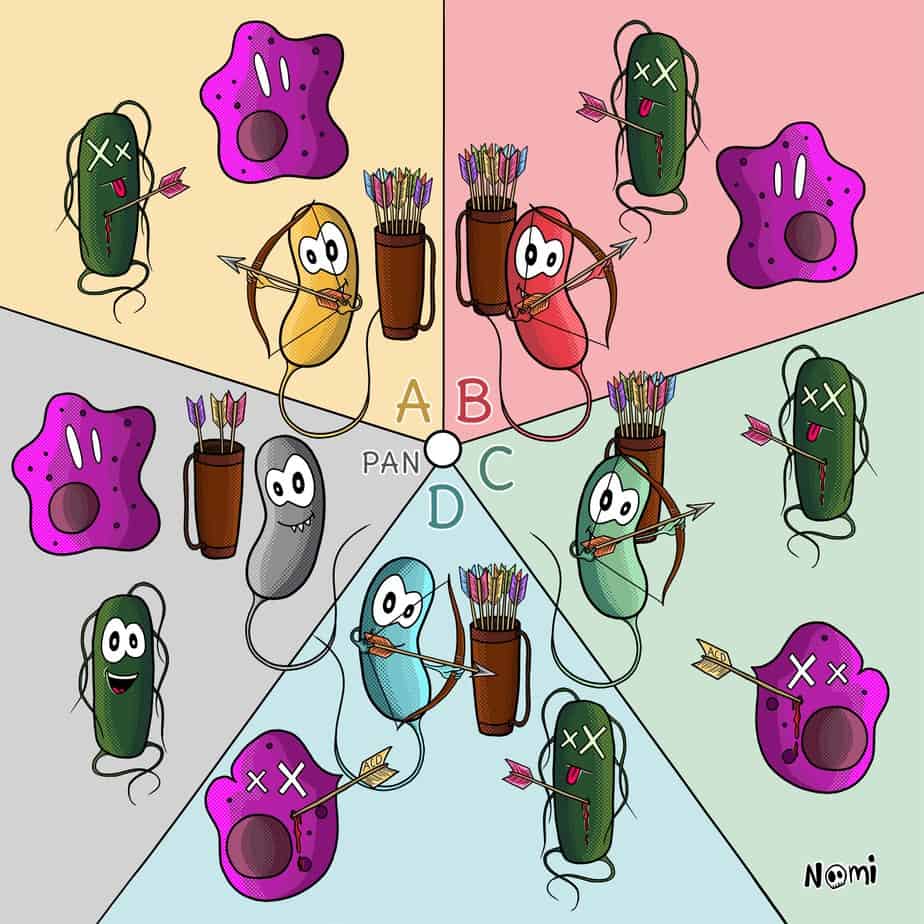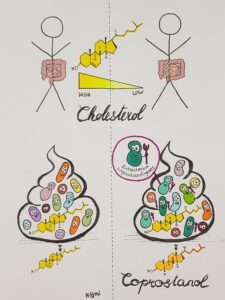Microbes are all over your body and especially the bacteria in your gut keep you healthy. They help you digest food, strengthen your immune system and protect you from pathogenic gut bacteria.
Those bacteria that call your gut their home are the so-called commensal bacteria. Luckily, they have a special superpower: They can protect us from bacteria that cause infections and make us sick. For this, our commensal gut bacteria developed some extraordinary strategies to defend these pathogens.
So, by nurturing our friendly gut bacteria, you are also strengthening your protection against diseases. Here, we will look at what kind of bacterial wars are going on in your gut and how your gut bacteria defend pathogens and keep you healthy.
Your gut bacteria defend pathogens with toxic molecules
Bacteria have many different means to kill other microbes, competitors or even their own siblings. Often, these bacteria produce molecules that are toxic to their prey, which means they inhibit cellular proteins or machineries. Without these machineries, the prey is then lacking an essential cell function to grow or survive, so that it eventually dies.
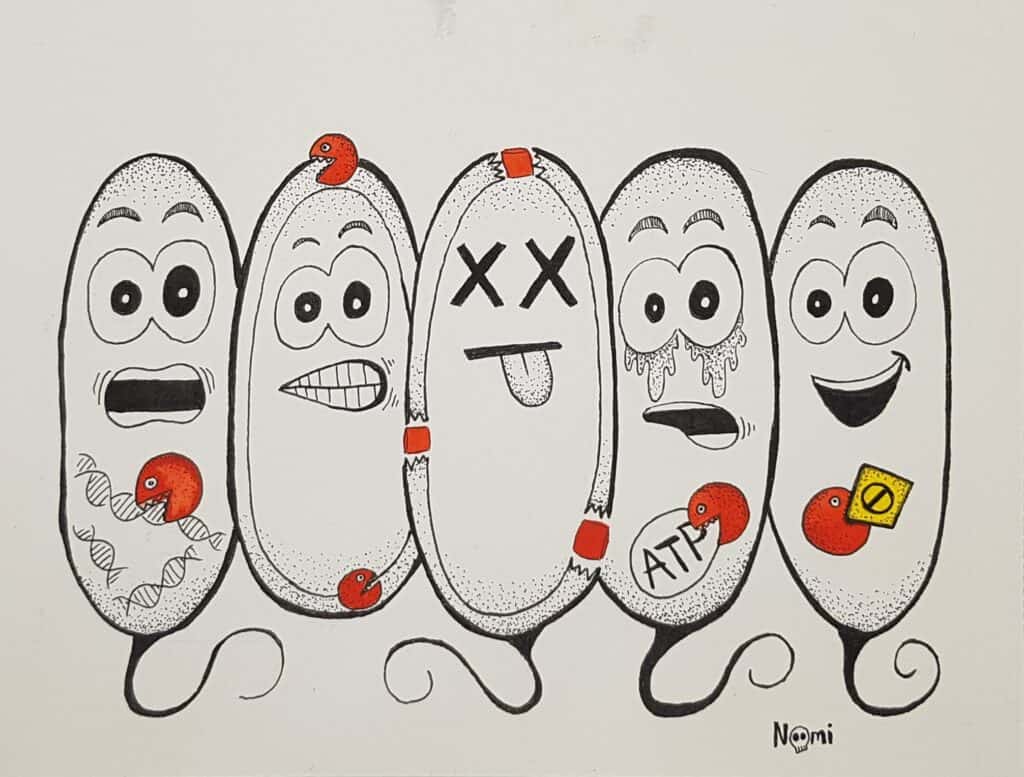
Interestingly, gut bacteria produce and deliver many different toxic molecules of various shapes and sizes, functions and even origins.
Gut bacteria produce bacteriocins
Many bacteria produce molecules that are like antibiotics specifically to kill bacteria. These are called bacteriocins.
Some bacteriocins are simple and small molecules, while others can be big and fancy. However, they all have a similar goal: they bind to a specific target in the prey bacterium and prevent that target from working properly.
So, no wonder that many bacteria in our gut microbiome produce bacteriocins that are toxic to pathogenic intruders. Also, we carry a lot of different bacteria in our guts and they all produce different bacteriocins. Hence, incoming pathogens face this huge load of toxic molecules making it really difficult to establish themselves in our intestines.
For example, one bacterium that loves the warmth and lack of oxygen in our gut is the bacterium Ruminococcus gnavus. And this one produces at least two bacteriocins, Ruminococcin A and C, that are toxic against human gut pathogens like Clostridium perfringens.
Other friendly gut bacteria, like Escherichia coli or Blautia producta, also produce bacteriocins that are toxic to pathogens, like Enterococcus faecalis. And some of their bacteriocins can even impact our gut cells by activating and strengthening our immune response.
Gut bacteria produce short chain fatty acids from fibres
Another way to protect against pathogenic gut bacteria is directly related to your diet. When we eat a lot of fibres, which are non-digestible carbohydrates, our friendly gut bacteria break these up. From these fibres, they produce small molecules that are called short-chain fatty acids, which have many positive health benefits for our overall wellbeing.
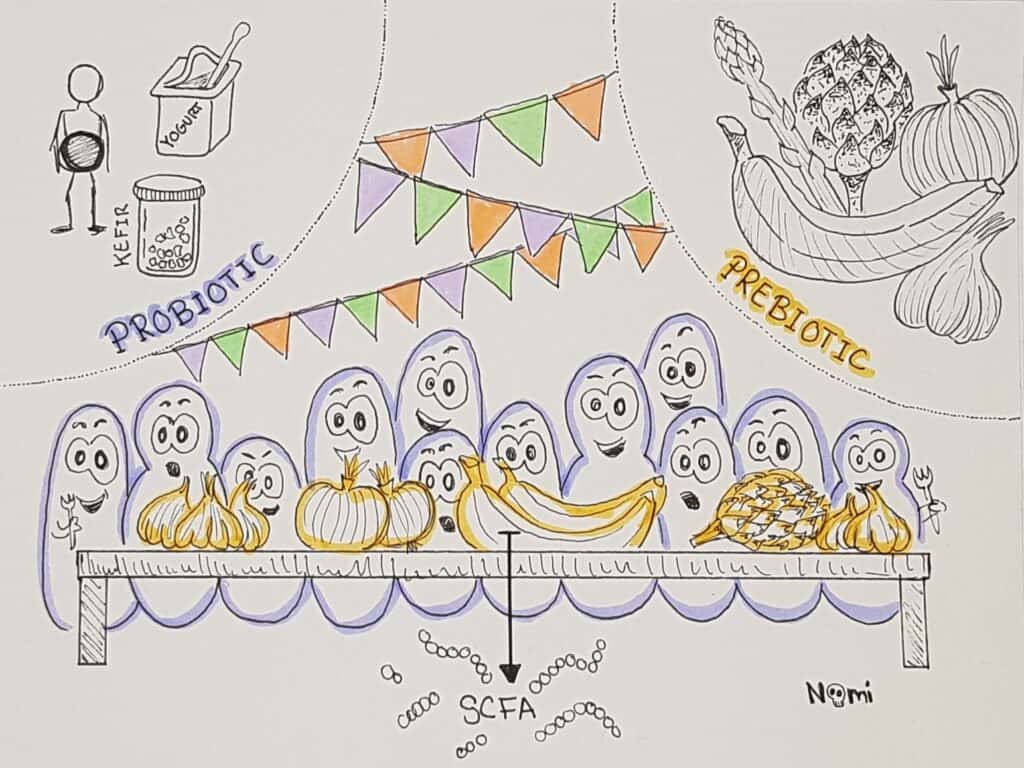
Interestingly, when we have a lot of these short-chain fatty acids in our intestine, the pH drops. This is already pretty difficult for most pathogenic bacteria, as not many can handle this acidic environment.
Plus, short-chain fatty acids diffuse into pathogenic gut bacteria where the pH drops as well. This can disturb many cellular machineries from functioning properly and not many bacteria have the right tools to defend against this attack, so they’ll die.
Gut bacteria convert bile acids into toxic compounds
To better digest the fats in food, our liver produces bile acids. These molecules bind fatty acids and lipids so that we can take them up better into our bodies.
But some of our friendly gut bacteria can convert these primary bile acids from our liver. For example, one of these bacteria, Clostridium scindens, transforms them into secondary bile acids that can bind the lipids of bacterial membranes.
Like this, secondary bile acids open the membranes of some pathogenic gut bacteria, like Staphylococcus aureus, Bacteroides thetaiotaomicron or Clostridoides difficile. This eventually kills the intruders and keeps our guts pathogen-free.
Killing pathogens with bow and arrow
Yes, also direct bacterial wars are happening in our guts! And they are nasty!
Some bacteria use tiny little bows to shoot deadly arrows into other bacteria. And these arrows can be incredibly toxic so the shot bacterium has barely any chance to survive the attack.
Luckily, our gut bacteria use their bows and arrows to defend against gut pathogens. For example, commensal bacterium Bacteroides fragilis has three different bows and can shoot various arrows. And research showed that this bacterial friend can protect us from bacteria that otherwise cause intestinal diseases.
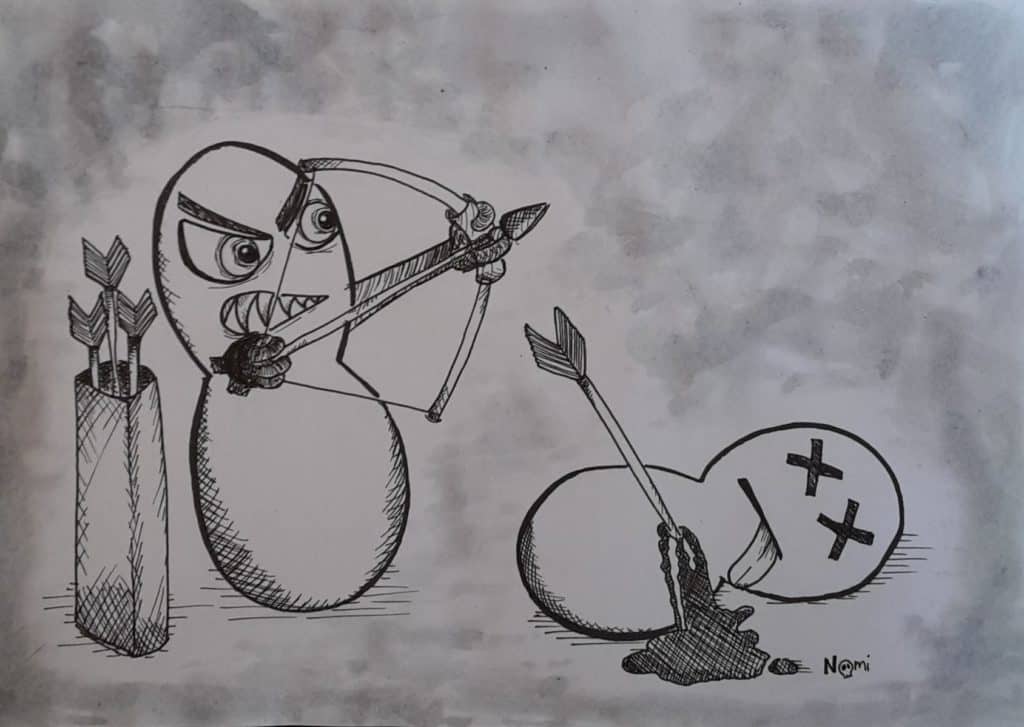
Interestingly, Bacteroides fragilis is not opposed to hit’n’kill its own toxic bacterial siblings since some members of his family can indeed make us sick. But our friendly Bacteroides fragilis collected many different immunity proteins against its evil siblings so that their toxic arrows cannot harm it. Instead, Bacteroides fragilis keeps shooting and killing until we are safe from the pathogenic sibling.
Keeping nutrients from pathogenic gut bacteria
Another important way how gut bacteria defend pathogens is by keeping nutrients away from them. In all mixed microbial communities, bacteria fight for nutrients, especially for metals like iron, zinc but also sulphur sources.
Luckily, our gut bacteria developed some sneaky ways to steal these metals from gut pathogenic bacteria. By sending out special proteins that bind these metals very tightly, the commensals make sure to keep these metals from the pathogens. And if the pathogenic bacteria don’t have enough of these essential metals, they won’t survive and will eventually die.
Strengthening the mucus layer to block pathogenic gut bacteria
When you think about it, your gut is not part of your body – even though it is inside of you. All the food that we eat, stays within this digestion tube (mouth, oesophagus, stomach, intestines) until it comes out on the other side.
And to protect us from harmful microbes and molecules, we need to have a clear physical barrier from the content of the tube. This barrier is the so-called epithelial layer, which is covered by a slimy mucus on the outside. And this sticky slime helps keep off intruding microbes so that they cannot breach through the epithelial wall and get into our bodies.
Luckily, our helpful gut bacteria help us maintain this slimy defence wall. Because just by being close to this mucus layer, the epithelial wall produces more slime. And if the slime gets thicker, gut pathogenic bacteria have more difficulties getting into our bodies.
To help the slime grow, some bacteria adapted very well to the conditions within the gut. For example, our friendly gut bacterium Ruminococcus gnavus cuts off the very end of the mucus layer and feeds itself with it. This does not harm the mucus itself, but it keeps the bacterium close by. And this in turn triggers the epithelial wall to produce more mucus. So, everyone wins.
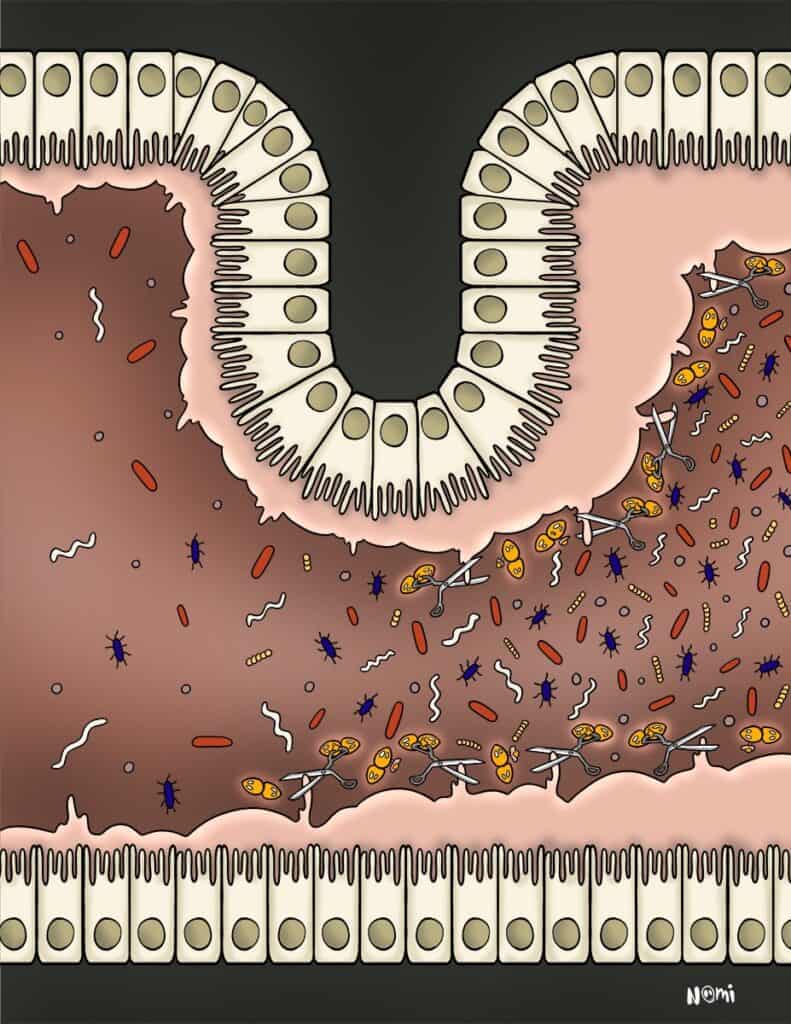
How to help your gut bacteria defend pathogens
Now, that you better understand how your gut microbiome defends pathogenic gut bacteria, make sure you support them keeping you healthy. By feeding your gut bacteria the right foods, you will help them be comfortable and happy in your gut. And when the right bacteria grow within you, they will gratefully protect you from nasty intruders!
Another idea for researchers is to use what they have learned to keep you healthy. The idea is to develop probiotics or prebiotics that help us defend against nasty pathogens. For example, you might take pills containing toxins against pathogenic gut bacteria or probiotics with bacteria that can fight off pathogens.
Whatever it may be, you can always help your gut bacteria be happy in your intestines by eating the right things. That means lots of fibre and veggies! ?

